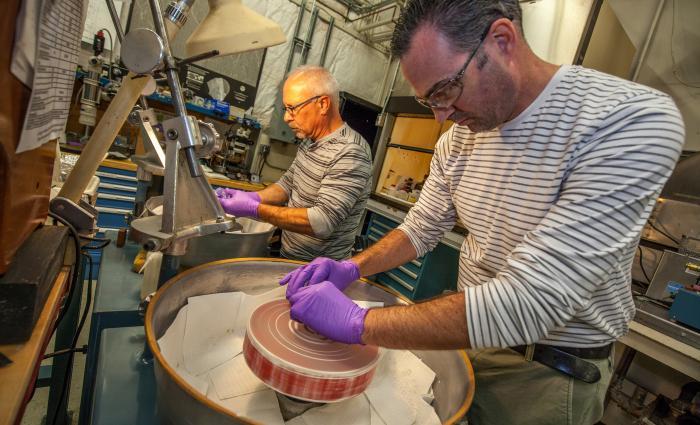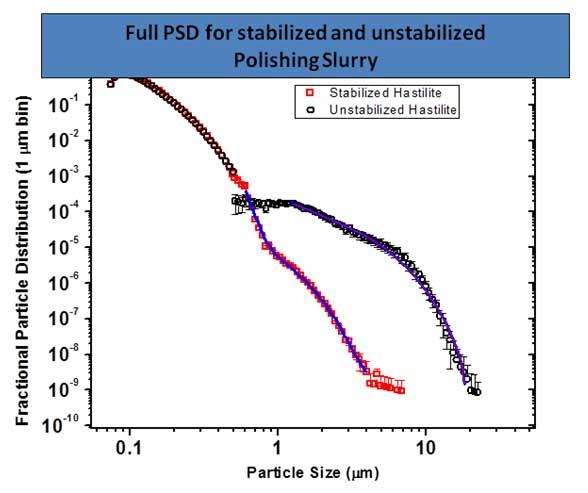Polishing compounds are chosen based on factors such as the rate at which they remove material as well as the surface quality they produce, both of which depend on particle size. Producers of commercial polishing compounds, such as Hastilite PO, Hastilite PO Ultra, and Cerrox 1663 advertise particle sizes based on measurements of their polishing compounds as manufactured. In practice, however, when the polishing compounds are prepared at working concentrations, they often suffer from poor particle size distribution stability. Particles are attracted to one another and form larger aggregates, which shifts and broadens the particle size distribution and can make it more difficult to keep the slurry particles suspended. Fast-settling slurries result in unnecessary material losses and fouled equipment and can prevent further slurry processing, such as filtration. In addition, the presence of larger particles has the potential to introduce scratches and toincrease workpiece roughness.
LLNL's Slurry Stabilization Method reduces particle agglomeration, thereby preserving the slurry manufacturer's as-manufactured particle size at working concentrations.
LLNL's Slurry Stabilization Method provides a chemical means of stabilizing a polishing compound in suspension at working concentrations without reducing the rate of material removal. The treated product remains stable for many months in storage.
A slurry stabilized using LLNL's Slurry Stabilization Method has many potential advantages. The stabilized slurry will retain its advertised particle size distribution rather than agglomerating; therefore, improvement of the PSD-2 and microroughness of polished parts is expected. It also exhibits improved filterability, permitting filtration down to lower pore sizes with increased filter lifetimes, which reduces the chances of scratching by foreign particles. The reduction in slurry settling also reduces overall slurry usage, and the stabilized slurry is easier to process and easier to clean up.
Potential applications include manufacturing of optics used in high power or high energy laser or optical systems; as well as general manufacturing of optics and wafers.
US Patent No. 10287457, Polishing slurry preventing agglomeration of charged colloids without loss of surface activity published May 14, 2019



